Choosing what size art for wall can transform any room, balancing aesthetics and enhancing the ambiance. The right art size isn’t just about filling space; it’s about achieving visual harmony, ensuring the artwork complements the room’s layout, furniture, and proportions. From living rooms that call for large, statement pieces to hallways that suit smaller, vertical arrangements, each wall size and room type benefits from thoughtful art placement. Understanding common guidelines, such as covering two-thirds of the furniture’s width or calculating art to cover 60-75% of wall space, can make selecting the ideal piece simpler. Additionally, considering the room’s function and vibe ensures your art not only fits but elevates the space. Let’s explore how to pick the perfect artsy size for every wall in your home, adding beauty, character, and cohesion to each room.
Understanding Wall Art Dimensions
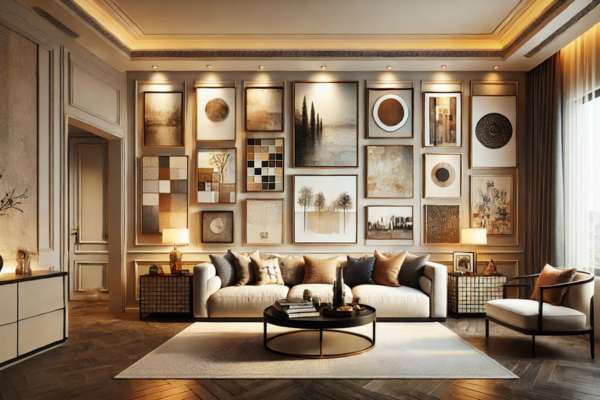
Dimensions are foundational to balanced wall art. Art too large can overpower; too small, and it may fade into obscurity. Beyond height and width, it’s the relationship with the wall and surrounding elements that counts. The “three-quarters rule” offers a general guideline artsy should span roughly 60-75% of the wall width for visual equilibrium. But remember, dimensions are more than numbers—they’re the canvas for the room’s atmosphere.
The Basics Of Wall Art Sizing
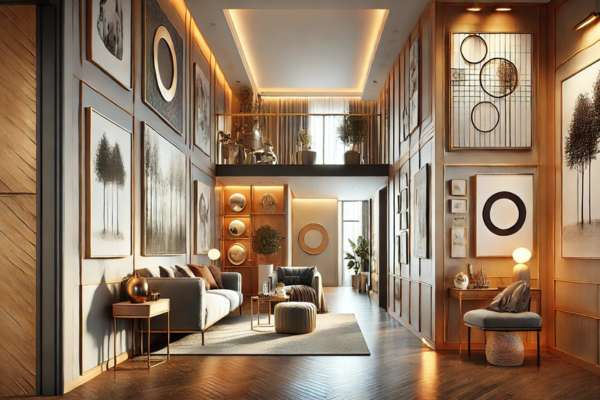
Wall art sizing isn’t complicated but requires intention. Start by analyzing the wall’s importance in the room. High-traffic areas like hallways, or focal points like the wall above a sofa, are ideal for attention-grabbing artsy. For smaller spaces, medium pieces (around 24×36 inches) bring charm without overwhelming, while expansive walls might beckon for grand pieces or a gallery arrangement.
Common Sizes For Wall Art And How To Choose

Art sizes span from petite accents to imposing statements, each offering a unique effect:
– Small: Below 18 inches, best for narrow walls or as fillers.
– Medium: 18-24 inches, perfect solo for smaller walls or in a gallery mix.
– Large: 24-36 inches, demands attention, perfect for above furniture.
– Oversized: 36+ inches, powerful in large spaces, anchoring the room’s focus.
How To Measure Your Wall For Art
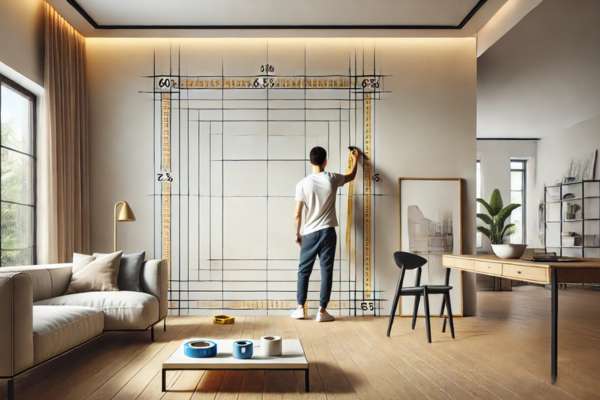
Start with the basics: measure the wall’s width and height, calculating 60-75% of that area as your artwork’s sweet spot. If the wall spans 10 feet, aim for artsy between 6-7.5 feet. Painter’s tape can help you visualize this before committing, giving you an on-site preview of what fits.
Art Size Based On Room Type
The ideal art size varies by room. Consider the space’s purpose and style:
– Living Room: Statement pieces or medium art clusters that align with the sofa’s width.
– Dining Room: Proportional to the table, often medium in size for a balanced ambiance.
– Hallways and Entryways: Vertical or smaller pieces in a linear arrangement for flow.
Choosing The Right Art Size For Bedroom Walls
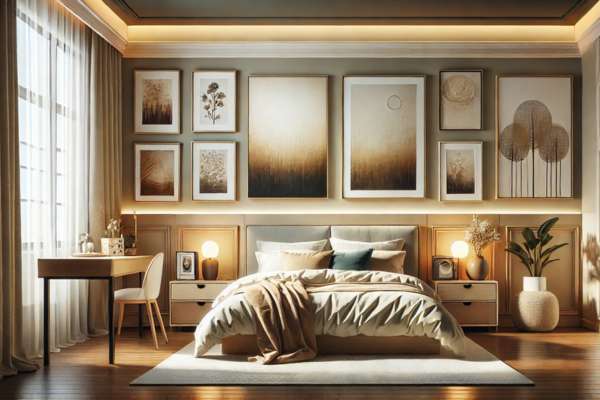
Bedrooms call for calm, and the artwork above the bed often reflects this. Above the headboard, select artsy that’s two-thirds of the bed’s width; a queen bed might suit a 45-inch piece. Smaller artwork on other walls, such as near a reading nook, can enhance coziness without intruding on restful vibes.
Customizing Art Size For Unique Spaces
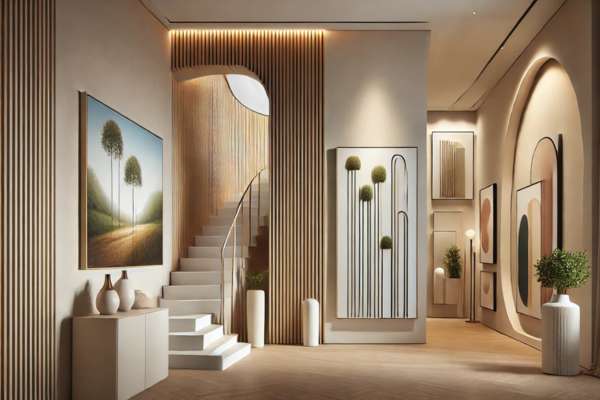
Unique spaces call for creative sizing. For example, staircases suit vertical art, while narrow hallways benefit from tall, slender pieces. Customized artsy can match unconventional areas like rounded or angled walls, offering seamless, harmonious decor tailored to unique dimensions.
Scaling Art To Fit Different Wall Sizes
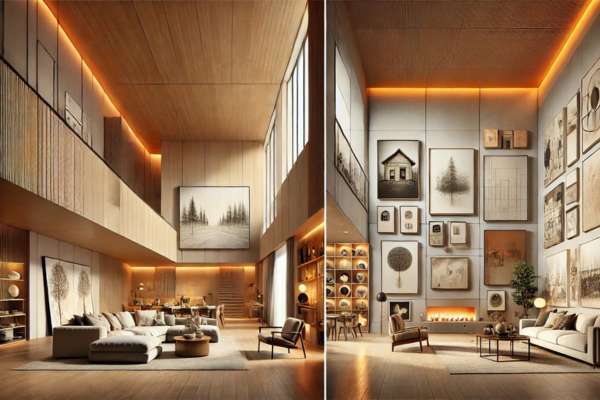
Scaling art to wall sizes blends creativity with practicality. Large rooms may shine with a single oversized piece that anchors the space, while smaller rooms benefit from minimalist designs or clusters of small works. Open-concept layouts suit bold pieces that tie rooms together, or smaller pieces grouped in rhythmic arrangements.
Art Size For Different Rooms In Your Home
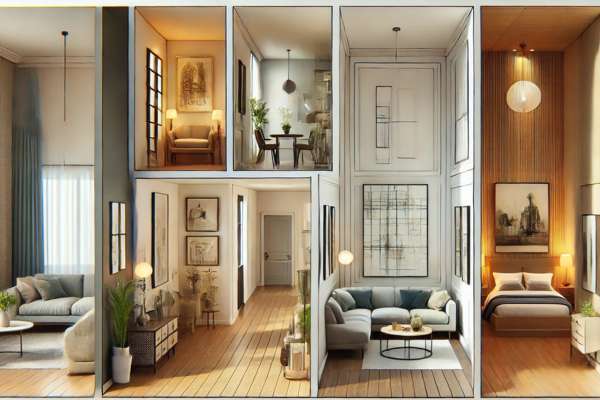
Every room has unique artsy sizing needs:
– Kitchen: Small framed pieces over counters or breakfast nooks.
– Bathroom: Compact, moisture-resistant artsy near vanities or above the toilet.
– Home Office: Medium to large artsy that inspires without distracting, well-placed on side walls or above the desk.
The Ideal Wall Art Size Above Furniture
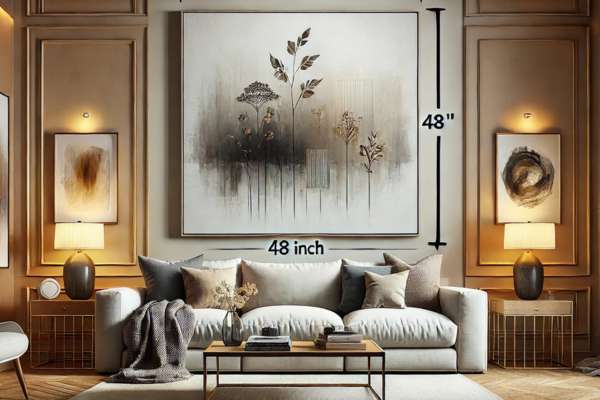
artsy above furniture should feel like it belongs there. Follow the two-thirds rule, where the artwork covers two-thirds of the furniture width, to create balance. For instance, with a 72-inch sofa, choose artwork around 48 inches wide. This simple ratio ensures visual harmony without overwhelming the room’s layout.
Choosing Art Size For Different Types Of Artsy
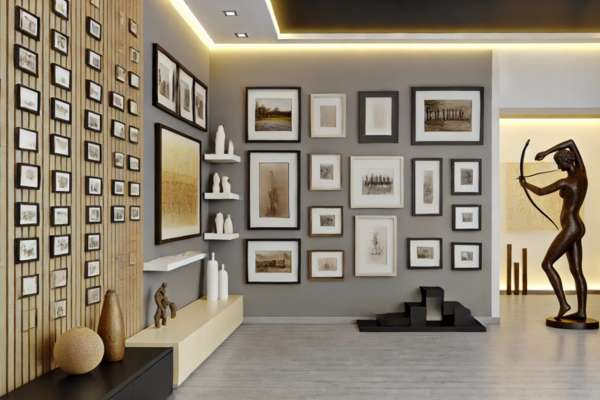
Different artsy forms require different sizing considerations. For example, photographs or small prints often work best in groupings, such as gallery walls, while large paintings or sculptures stand alone as room-defining focal points. For sculptures or reliefs, choose open wall space where their three-dimensional aspect can fully shine.
Measuring Your Wall Step-By-Step Guide
1. Measure the wall’s height and width.
2. Calculate 60-75% of the width as a general size range.
3. Use painter’s tape to outline this area for a visual preview.
4. Step back to ensure it aligns with the room’s proportions and furniture.
How Art Size Influences Mood
Size and placement set the room’s mood. Larger portions radiate drama and significance, creating a bold declaration, while smaller artwork creates intimacy and warmth, in particular in bedrooms or personal spaces. The length of the artwork you choose performs an essential role in crafting the emotional resonance of the room.
Common Mistakes When Selecting Artsy Size
1. Ignoring Proportion: artsy that’s too small can look lost, while too large may overwhelm.
2. Overcrowding: Oversized artsy in a small room creates clutter.
3. Random Placement: Positioning artsy without context disrupts harmony.
4. Hanging artsyIncorrectly: artsy should generally sit at eye level for optimal viewing—around 57-60 inches from the floor.
FAQs
1. How do I determine the proper length artsy for my wall?
To decide the right length, consider the wall space and furnishings it’s going to accompany. Generally, purpose for artwork that spans 60-seventy five% of the width of furniture it’s placed above, inclusive of a sofa or console. For naked partitions, cover 50-70% of the wall’s width with a single piece or a collection of frames. High ceilings regularly match taller pieces or stacked preparations, at the same time as smaller rooms take advantage of slight-sized or horizontal artwork to keep away from overwhelming the distance.
2. Can I mix special sizes of artwork at the identical wall?
Yes, mixing specific sizes of artwork can upload intensity and visible hobby to a wall, in particular whilst developing a gallery wall. Start with one large, anchoring piece and arrange smaller portions around it, preserving steady spacing of about 2-three inches. This approach achieves a cohesive appearance, balancing numerous styles and sizes with out developing muddle.
Conclusion
Choosing what size art for wall is key to enhancing your space with balanced, impactful decor. The right artwork size creates visual harmony, fills spaces naturally, and complements both room function and furniture layout. From living rooms with bold statement pieces to bedrooms where artsy adds warmth, sizing artsy effectively transforms how each space feels and flows. When selecting, always consider wall dimensions, eye level alignment, and how the art relates to surrounding elements. Thoughtfully chosen artsy, scaled to fit, doesn’t just complete a room it makes it unforgettable.
